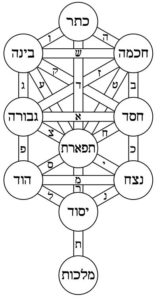This week’s parasha, Ki Tavo, records some of Moses’ final instructions to the people before his passing, and what the nation should do upon entering the Holy Land. Among these things is to have the Twelve Tribes divided upon two mountains, and pronounce a set of curses and blessings. The Torah records a total of 11 distinct curses. Although the word “cursed” appears twelve times, the last instance is only a general statement that “Cursed be the one who does not uphold the words of this Torah, to fulfill them…”
In his mystical commentary on this week’s parasha (in Sha’ar HaPesukim), the Arizal explains that the 11 curses are neutralized by the 11 ingredients of the special Ketoret incense. Similarly, they are blocked by the 11 curtains of the Mishkan. Why specifically 11? The Arizal explains that just as there are Ten Sefirot in the realm of holiness, there are ten opposing “counter-Sefirot” forces in the realm of kelipah, the unholy “husks”. These ten counter-Sefirot have an additional 11th source which gives them energy, since they are otherwise empty on their own. This is unlike the holy Sefirot, each of which is imbued with, and shines forth, its own unique energy and light. Having said that, among the Sefirot there is indeed an eleventh aspect, too, which is the unifying Da’at (itself portrayed as only the inverse of Keter).
Although Rabbi Chaim Vital records little else in Sha’ar HaPesukim that the Arizal said on Ki Tavo, we do know that the Arizal’s source for the counter-Sefirot was actually the Zohar—not on this week’s parasha, but on parashat Pekudei. In one of the longest, most complex, and most esoteric passages of the Zohar (starting at II, 242b), we learn about the energies that oppose (and, in some ways, balance out) the Sefirot in the realm of the Sitra Achra, the “Other Side”. Making sense of the Zohar’s cryptic language is a huge challenge, and I hope to do it some justice in the overview that follows. Continue reading

